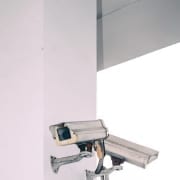The How of Heart
Collaboration. Empowerment. Win/Win. Integrity. Authenticity. We’re finally recognizing the efficacy of acting with humanitarian values! But how do we DO it? How do we know what, or if, to change our comfortable communication patterns? How do we modify any unconscious behaviors to make new habitual choices and recognize when what we’re doing no longer is sufficient?
I’m excited: I’ve spent my life designing models that work with the unconscious to facilitate real change and choice. Esoteric, I suppose. But I’ve always known that habitual change cannot come from merely attempting to change behaviors.
From Abuse to Decryption: The How of Choice
As a child of extreme domestic, sexual, and physical violence, I frequently ran away to a rock on a nearby reservoir for safety and solace. Because I was an ‘A’ student, cheerleader, school pianist and Editor of the school newspaper – one of those ‘good kids’ – I couldn’t understand why I was being abused (The skeleton in the closet appeared years later.). Unfortunately, there were no agencies to help me in those days.
Sitting and thinking by the water, I wrote in Thinking Journals to decode my parents’ behaviors (In retrospect, odd for an 11-year-old.) so I could recognize an oncoming assault – something many incest survivors do. My dream was to make the data available so no child, no human, would ever be harmed again. I believed that people would prefer to do no harm if they could make mindful choices rather than have harmful, unconscious reactions. This ambitious goal matched my fledgling identity: when asked what I wanted to be when I grew up I’d say “Change the world”. How odd for someone so young! (I was diagnosed with a form of Asperger’s decades later.).
During my years by the water, my Thinking Journals, of which there are now hundreds, filled with rookie drawings, illustrations, and ideas of ways to recognize patterns in both conversation and actions. For decades thereafter, I studied how language works with the brain, how brains create habits, and how to tear apart and understand human systems to add choice.
Decades later, as an entrepreneur, I had a complete, scalable skill set that facilitates a route between unconscious triggers and habits to make new choices: a new way to listen to avoid biases and assumptions, a new form of question that enables brains to capture, systemize, and shift the unconscious rules that govern each of us, and the sequence of change and choice so any aberrant behaviors could be interrupted and redirected. I developed a model of How to Change congruently that adopts the new without resistance; I’ve been teaching this in sales, coaching, leadership, and change management.
Much different than offering the Why and What of change, I offer the How – how to go into the unconscious and make systemic, congruent change.
Why Behavior Change Isn’t Good Enough
Our brains unconsciously choose our behaviors from our cache of lifelong subjective experience that I call our system; our subjective experience is a well-oiled machine that keeps us ticking congruently every moment of the day. Our viewpoints, our styles, our behaviors are all pre-determined and set to maintain systems congruence. I realize we all think we have unrestricted choice; we don’t. We follow our personal ‘company line’ in every communication.
When we wish to add anything new, it will be resisted as it will cause our system to shift out of congruence – even if it’s something we’re in agreement with because our brains must fit the new in with the old/habitual. We know we should go to the gym more often, or eat healthy; we know we should allow our relatives to have disparate political viewpoints. But try as we might, we hard-pressed to permanently change our behaviors. This is the problem with conventional training and Self-Help books.
Why can’t we just DO something different? Because it’s a Belief issue. The 400-pound man walking down the street will not heed an offer of a half-priced gym membership – not because he hasn’t looked in the mirror lately or because he’s ignoring his doctor’s warnings, but because his eating and lack of exercise are habitual: to make a permanent change, he’d have to ‘chunk up’ as they say in NLP, and go beyond the ‘What’ or the ‘Why’; he’d have to change his beliefs about who he is. He’d have to become a healthy person.
‘What’ to do is behavioral. ‘How’ is structural, systemic, and unconscious. Here’s an example of the difference: ZDNet has an article on transforming an organization on the principles of collaboration. They say it’s necessary to “Empower staff”: “To accomplish this goal it is important to train, support, and mentor staff to help them work more collaboratively. Staff must also practice their new collaboration skills back in the workplace so it becomes the new daily business and not just the latest management fad.”
Great. But HOW does one accomplish this? Everyone will interpret these words subjectively, according to their own beliefs about their skills. Obviously there can’t be organization-wide consistent adoption with just the What. ‘What’ offers a description and doesn’t address how to redirect our brain’s automatic choices. To convert the ‘What’ to the ‘How’ we must
- add automatic unconscious choices to our habitual behaviors to comply with our new goals;
- recognize the difference between what we think we’re doing and what we’re actually doing;
- install something new without offending what’s been working well;
- facilitate internal buy-in to make changes in the Status Quo;
- override habitual behavior choices and replace them with the new as appropriate;
- maintain systems congruence.
It’s far more complicated than just understanding What to Do. It’s actually How to Be.
Changing Beliefs Causes Changed Behaviors
The problem with seeking to act with authenticity or empowerment, etc., is that we attempt to make behavioral changes without shifting the underlying system that holds our current choices in place. We must change from our core Identities and Beliefs.
All of us have unique Identities; our Beliefs are the operating manuals; our Behaviors exhibit our Beliefs in action. Every day, in every way, we ACT who we ARE. I, for one, work out at the gym 9 hours a week. I hate it. Hate it. Words can’t describe how much I hate going to the gym. But I’m fit, healthy and strong. I AM a Healthy Person; my Behaviors carry out my Identity accordingly: I eat healthy, exercise, and meditate. We all do this in our own ways.
When anything seeks to change us – when we receive training, or get told to ‘do’ something, or when coaches ‘suggest’ or sellers ‘recommend’ or leaders promote a new change – it shows up as a threat and will be resisted unless it’s accepted and adopted by our Identity and given a value set in our Beliefs.
To act with compassion, to have empathy, to lead with values, to design collaborative environments, we need a set of core Beliefs that get incorporated into our habitual choices; we need to inform our system to match the Doing to the Being. We cannot congruently act the Doing if it’s incongruent with our Identity. It’s the most difficult aspect of change – creating consistent, habitual actions – because it’s unconscious, systemic, and resistant. It is possible, however, but not simple.
Working, speaking, acting with Heart is not behavioral. We must first Be the people with heart; Be kind, collaborative, authentic people. Organizations need to shift their corporate identities and manage behavioral adoption; we must become Servant Leaders and compassionate Leaders. We just need the Skills of How to accomplish this.
About the Author













Leave a Reply
Want to join the discussion?Feel free to contribute!